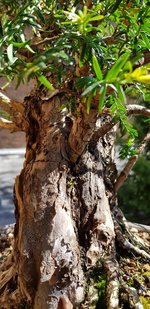This has been my experience also, ive often had it show up in hornbeam/beech pots
Hornbeams and Beeches from nurseries are usually planted in inoculated soil, so it's not really that these mycs come out of the blue sky. ;-)
That being said.
This is my view:
Mycorrhizal inoculation is a weird process. There are types of fungi that can live on their own and attach to a tree later in life. There are also types that can't live without a tree, and spores more or less need to land on a root, or grow from one root to another (communal inoculation) to survive.
Then there's this stuff called "environment" that can be beneficial or detrimental to fungal growth. Not every myc will live inside a plastic pot, others don't like wooden pots, others don't like clay. Some can degrade pumice, others only volcanic rocks. Some need a specific pH range, others do just fine in every environment.
I've had this discussion about a hundred times already, and I think it boils down to: It doesn't hurt to add some spores to your soil if you have the money, myc will eventually show up but in all honesty this can be a decade long process; a billion spores released 3 miles from your home will cause about 3-4 to land in your back yard, you'd need at least two spores close to each other landing inside your pot. Luckily there are hundred of mushrooms pushing spores at the same time, billions every day per mushroom. A thriving fungal community inside your pot can be decimated in a single drought, or with a fertilizer application, or a hot day. So spending a lot of money on it, isn't really worth it.
If you want good culture inside your pots, just find the tree species you want to inoculate in the wild and transfer some dirt from the wild root tips to your pot.
This action will not only inoculate it with a community of favorable fungi, but also with helper bacteria. If the wild is close to your home, you can even bet on it that you're inoculating it for the right environment. Then again, a pot is hard to compare with the soil in the wild. You'll never know what you're going to get.
So yeah, doing nothing works, doing something works. No reason to get your panties fired up about it.
I suggest everyone to just start growing some shrooms or molds for themselves. It really provides some insights in fungal life and it would surely numb down some strong convictions. I've been doing so for about 10 years and I'm in the process of trying to isolate my perfect pine culture. It's been pretty difficult really, even though I can transfer up to 30% of the soil of one tree to another pot with the same scots pine, it's no guarantee that the fungus will continue growing. But when it does the effects are wonderful...
Keep in mind that even though biologists have been trying for decades, an estimated 90% of all microbial life hasn't been cultured in a petri dish yet. There's so much we don't know yet. I feel like it's weird to make strong claims about it.




